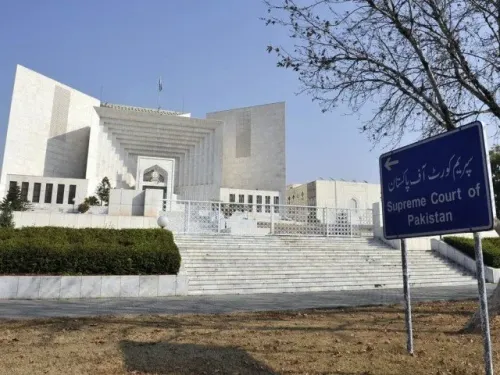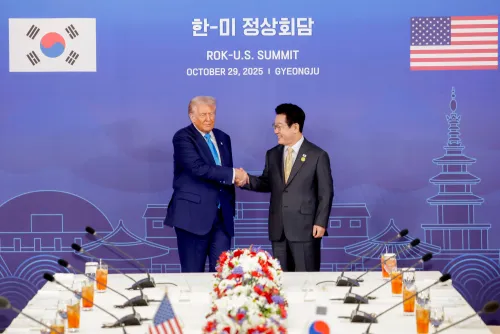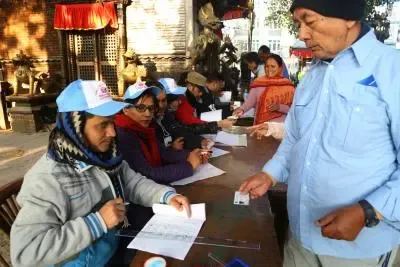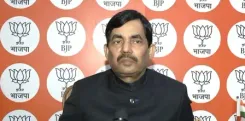Why is delivering aid to Gaza still so challenging?
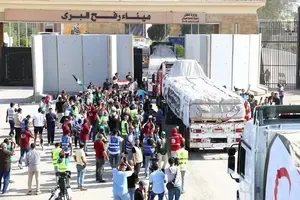
Synopsis
Key Takeaways
- Ongoing humanitarian challenges persist despite a ceasefire.
- Border crossings to northern Gaza remain closed.
- WFP's food deliveries are insufficient compared to targets.
- Access to northern Gaza is critical for aid convoys.
- Vulnerable populations are in urgent need of assistance.
United Nations, Oct 23 (NationPress) UN humanitarian officials have reported that providing essential aid to northern Gaza continues to face significant obstacles, despite the ceasefire being in place for over 10 days.
The UN Office for the Coordination of Humanitarian Affairs (OCHA) stated on Wednesday that since the ceasefire began on October 10, efforts to enhance response operations have progressed, particularly in the central and southern regions of the Gaza Strip.
Nonetheless, the persistent closure of the Zikim and Erez border crossings, which are crucial for direct access to the north, poses severe challenges for the delivery of humanitarian assistance to the area, OCHA indicated.
Simultaneously, UN partners tracking population movements across Gaza have documented over 425,000 transfers from southern to northern parts of the region since October 10, as reported by Xinhua news agency.
Andrew Saberton, the Deputy Executive Director of the UN Population Fund, who recently returned from Gaza, informed reporters that the agency successfully delivered some assistance last week via the Kerem Shalom/Karem Abu Salem crossing.
"We have been distributing medical supplies and equipment, including incubators, delivery beds, and fetal monitoring machines that were pre-positioned inside Gaza, to hospitals," he stated.
"However, the limited amount of aid entering Gaza after the ceasefire is far from sufficient."
On Tuesday, amidst 10 humanitarian missions coordinated with Israeli authorities, OCHA noted that six were successfully facilitated, including the transportation of water tanks, hygiene kits, and fuel into Gaza.
Abeer Etefa, a senior communications officer and spokesperson for the World Food Programme (WFP), remarked that since the ceasefire commenced on October 11, the agency has delivered over 6,700 metric tonnes of food, sufficient for nearly half a million people for two weeks.
"Daily deliveries are ongoing and now average around 750 tonnes," she said, emphasizing that this remains significantly below WFP's target of 2,000 tonnes daily.
"Without the utilization of all border crossing points, achieving this target is nearly impossible."
Currently, only the Kerem Shalom and Kissufim crossings in the south are operational. Severe destruction continues to hinder access to northern Gaza, where famine was declared in August. "We need Erez, we need Zikkim, we need these crossings to open," Etefa stressed.
Accessing northern Gaza with large-scale convoys is crucial.
"We've cleared roads extensively into the north," she remarked, "but we require these crossings to connect to Gaza City, where conditions are particularly dire."
WFP is in the process of reinstating its food distribution network, targeting 145 distribution points across the Strip, of which 26 have reopened. "People are showing up in large numbers, grateful for the effective and dignified way they can collect their rations," Etefa noted.
The aid is especially vital for the most vulnerable, including women, female-headed households, and the elderly, she added.
While there is hope, "there is cautious optimism" regarding how long the current situation will endure.
Many families are conserving part of their rations due to uncertainty about the ceasefire's longevity.
"It is a fragile peace," she warned.
Food prices remain excessively high, and supplies are still inadequate. "People can find food in the market, but it's prohibitively expensive," Etefa cautioned.
WFP is also assisting the most food-insecure households through digital payments, enabling around 140,000 individuals to purchase food locally, with plans to double that number soon. However, Etefa stressed that humanitarian aid alone cannot resolve the crisis, and commercial supplies must be allowed to complement relief efforts.
Only a fully realized and sustained ceasefire can enable WFP to operate at the necessary scale, Etefa concluded.



